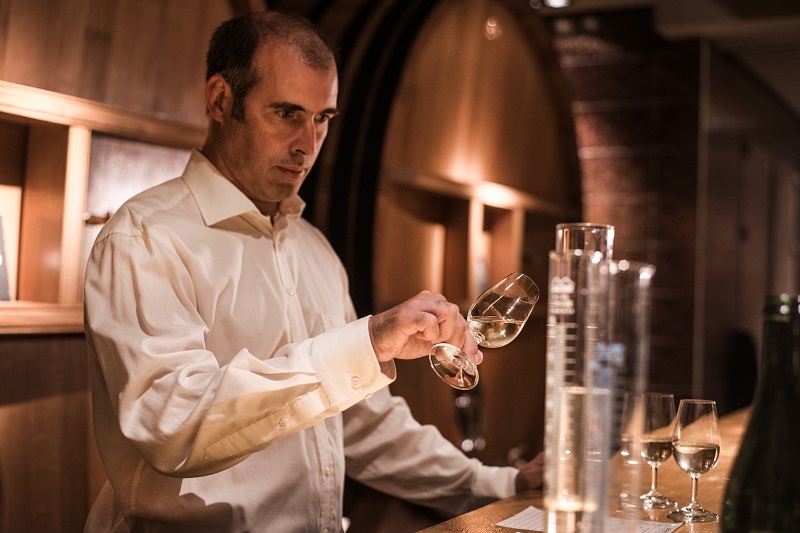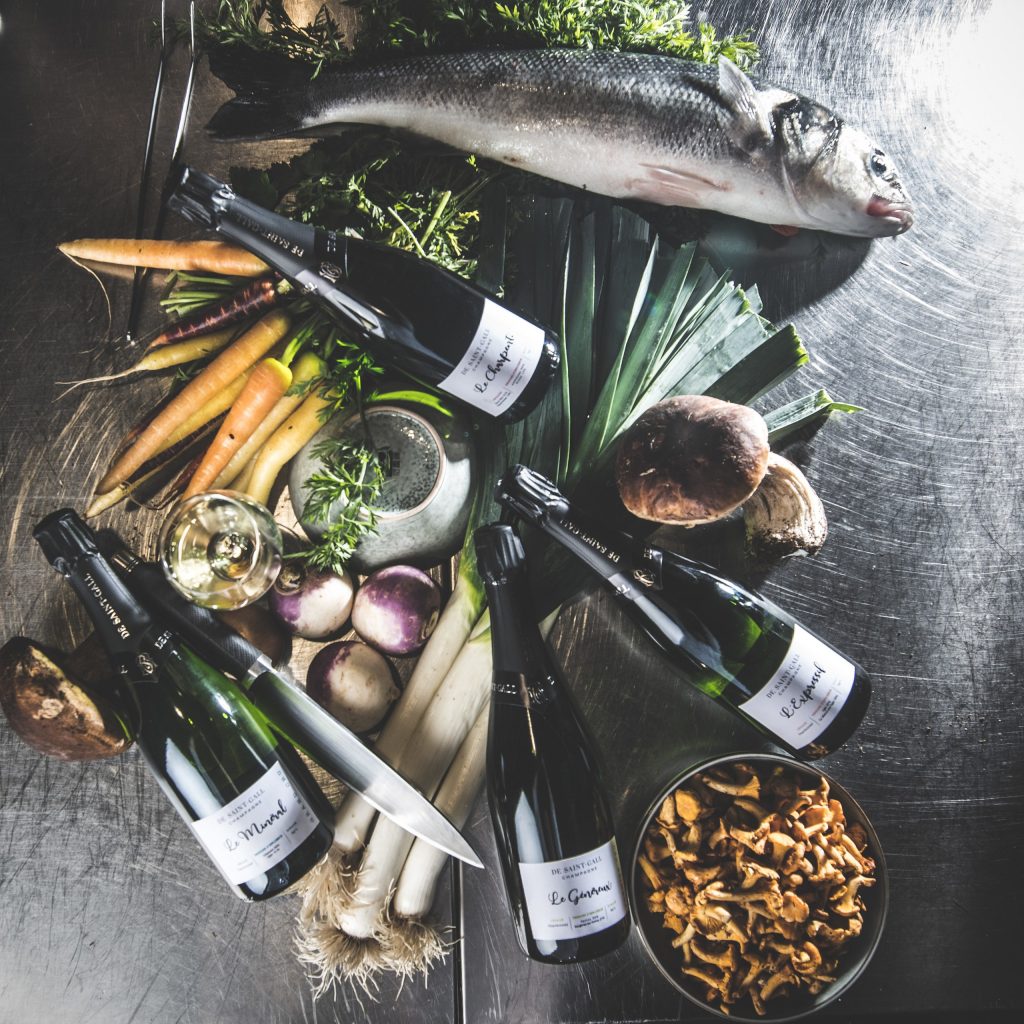9 Aprile 2020

De Saint-Gall: La quintessenza dell’arte nella produzione dello Champagne
Una delle chiavi della crescita della qualità e del prestigio della Champagne è stata l’ascesa alla ribalta dei coltivatori indipendenti, noti come vignerons o viticulteurs récoltants, che producono e commercializzano il vino dei loro vigneti.
Poi c’è De Saint-Gall. Fondata nel 1972, in seguito alla creazione della Union Champagne ad Avize, De Saint-Gall raggruppa più di 2.000 vignerons con circa 1.260 ettari di vigneti che sono al 90% Grand Cru o Premier Cru in terroirs principalmente nella Côte des Blancs, nota per lo Chardonnay, e la Montagne de Reims, nota per il Pinot Nero.
Oggi De Saint-Gall vanta 14 centri di produzione che rappresentano il più grande agglomerato di vigneti Grand Cru dello Champagne, e più di un quarto del totale disponibile nei villaggi di Avize, Cramant, Oger, Le Mesnil-sur-Oger, Ambonnay, Bouzy e Ay. Il Premier cru proviene principalmente da Vertus, Bergères-les-Vertus e Cumières.
I vini di ogni vigneto di ogni villaggio vengono vinificati e lavorati singolarmente in cantine moderne sotto la direzione di Cédric Jacopin, lo chef de cave dell’Union Champagne. Ciò che rende unico questo patrimonio è l’impegno ad esprimere il carattere distintivo e le “influenze” dei terroir di ogni villaggio.
De Saint-Gall produce un’impressionante gamma di Grand Cru Champagne, attingendo da un archivio di circa un migliaio di ettolitri di vino di varie annate. Grandi botti di rovere ospitano il Grand Cru Chardonnay di oltre 20 annate utilizzate per creare speciali cuvée che esprimono quella che Jacopin descrive come “la quintessenza dell’arte della lavorazione dello Champagne”.
Un esempio eccellente tra i vini d’annata è Le Blanc de Blancs Millésimé, noto per un elegante e fresco stile floreale e minerale. Dalle annate eccezionali, le migliori uve vanno in Orpale, un Brut Blanc de Blancs affinato nell’arco di 12 anni ad una seducente complessità, ricco e cremoso con intense note di frutta secca e una tensione minerale che solo il gesso dei terroirs può fornire. Il noto autore Richard Juhlin considera Orpale “uno dei segreti meglio custoditi della Champagne”.

De Saint-Gall ha recentemente introdotto una speciale collezione di vini conosciuti come Influences per esprimere le influenze dei suoi terroir e il carattere distintivo che essi conferiscono ai loro vini. La gamma di quattro vini è stata progettata per rappresentare i migliori terroir Grand Cru e Premier Cru della Champagne: Ambonnay, Cramant, Oger e Vertus.
Le Généreux è uno Chardonnay in purezza proveniente dai terroir di Vertus e Bergères-les-Vertus.
Le Mineral è uno Chardonnay puro che rappresenta i terroir di Cramant e Oger.
L’Expressif è uno Chardonnay puro che rappresenta i terroir di Oger e Le Mesnil-sur-Oger.
Le Charpenté mescola il Pinot Nero all’81% e lo Chardonnay dei terroir di Ambonnay e Bouzy.
ENGLISH
De Saint-Gall: The quintessential art of crafting Champagne
A key to the upsurge in quality and prestige of Champagne has been the rise to prominence of independent growers, known as vignerons or viticulteurs récoltants, who produce and market wine from their own vineyards.
Then there is De Saint-Gall. Founded in 1972, following the creation of the Union Champagne at Avize, De Saint-Gall groups more than 2,000 vignerons with about 1,260 hectares of vineyards that are 90% Grand Cru or Premier Cru in terroirs mainly in the Côte des Blancs, noted for Chardonnay, and the Montagne de Reims, noted for Pinot Noir.
Today De Saint-Gall boasts 14 production centers representing Champagne’s largest agglomeration of Grand Cru vineyards, accounting for more than a quarter of the total available from the villages of Avize, Cramant, Oger, Le Mesnil-sur-Oger, Ambonnay, Bouzy and Ay. The Premier cru comes mainly from Vertus, Bergères-les-Vertus and Cumières.
Wines from each vineyard of each village are vinified and processed individually in modern cellars under the direction of Cédric Jacopin, the chef de cave of the Union Champagne. What makes this patrimony unique is the commitment to expressing the distinctive character and “influences” of the terroirs of each village.
De Saint-Gall produces an impressive array of Grand Cru Champagnes, drawing from an archive of about a thousand hectoliters of wine from various vintages. Large oak casks hold the Chardonnay Grand Cru of more than 20 vintages used to create special cuvées that express what Jacopin describes as “the quintessential art of crafting Champagne.”
A sterling example among the vintage wines is Le Blanc de Blancs Millésimé, noted for an elegant fresh floral and mineral style. From exceptional vintages, the best grapes go into Orpale, a Brut Blanc de Blancs refined over 12 years to a seductive complexity, rich and creamy with intense notes of dried fruit and a mineral tension that only the chalk of the terroirs can provide. The noted author Richard Juhlin considers Orpale “one of the best kept secrets of Champagne.”
De Saint-Gall has recently introduced a special collection of wines known as Influences to express the influences of its terroirs and the distinctive character they impart to their wines. The range of four wines is designed to represent the finest Grand Cru and Premier Cru terroirs of Champagne: Ambonnay, Cramant, Oger and Vertus.
Le Généreux is a pure Chardonnay from terroirs of Vertus and Bergères-les-Vertus.
Le Mineral is a pure Chardonnay representing terroirs of Cramant and Oger.
L’Expressif is a pure Chardonnay representing terroirs of Oger and Le Mesnil-sur-Oger.
Le Charpenté blends Pinot Noir at 81% and Chardonnay from the terroirs of Ambonnay and Bouzy.